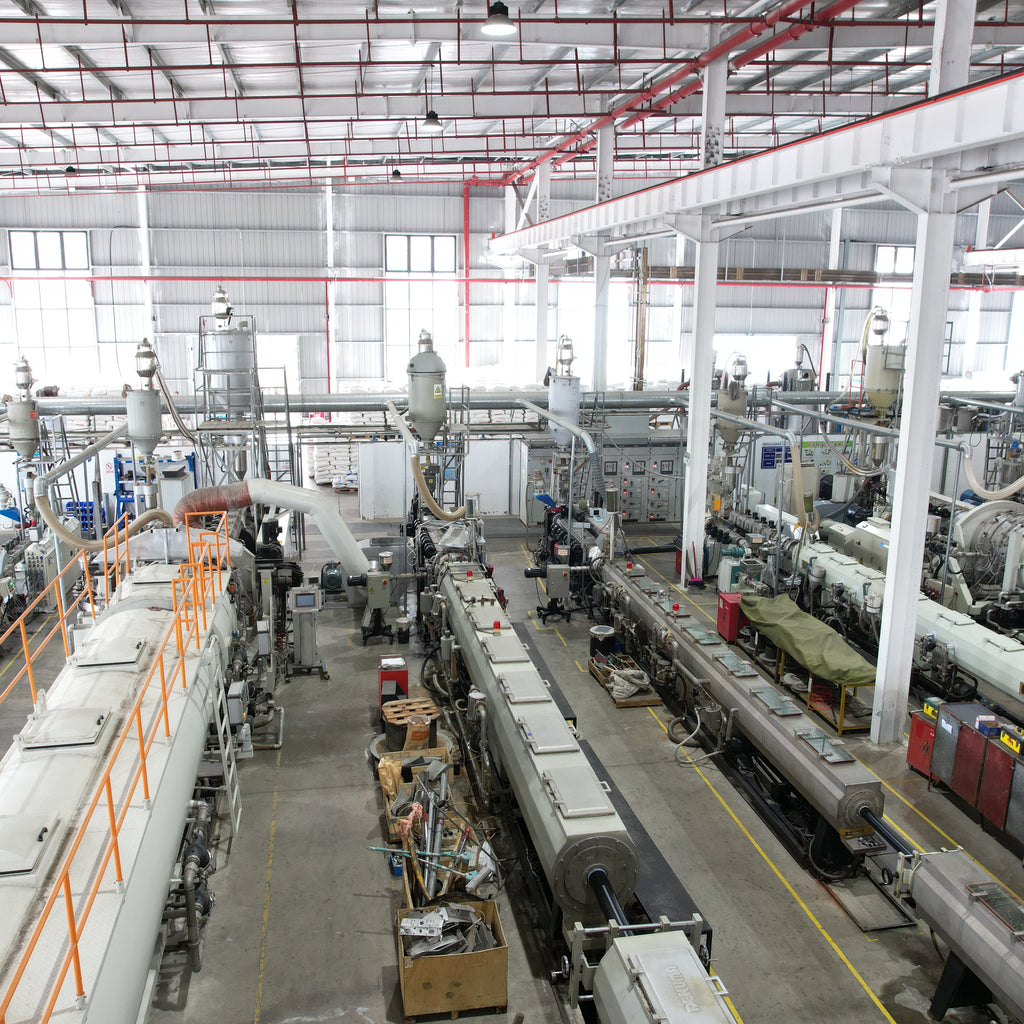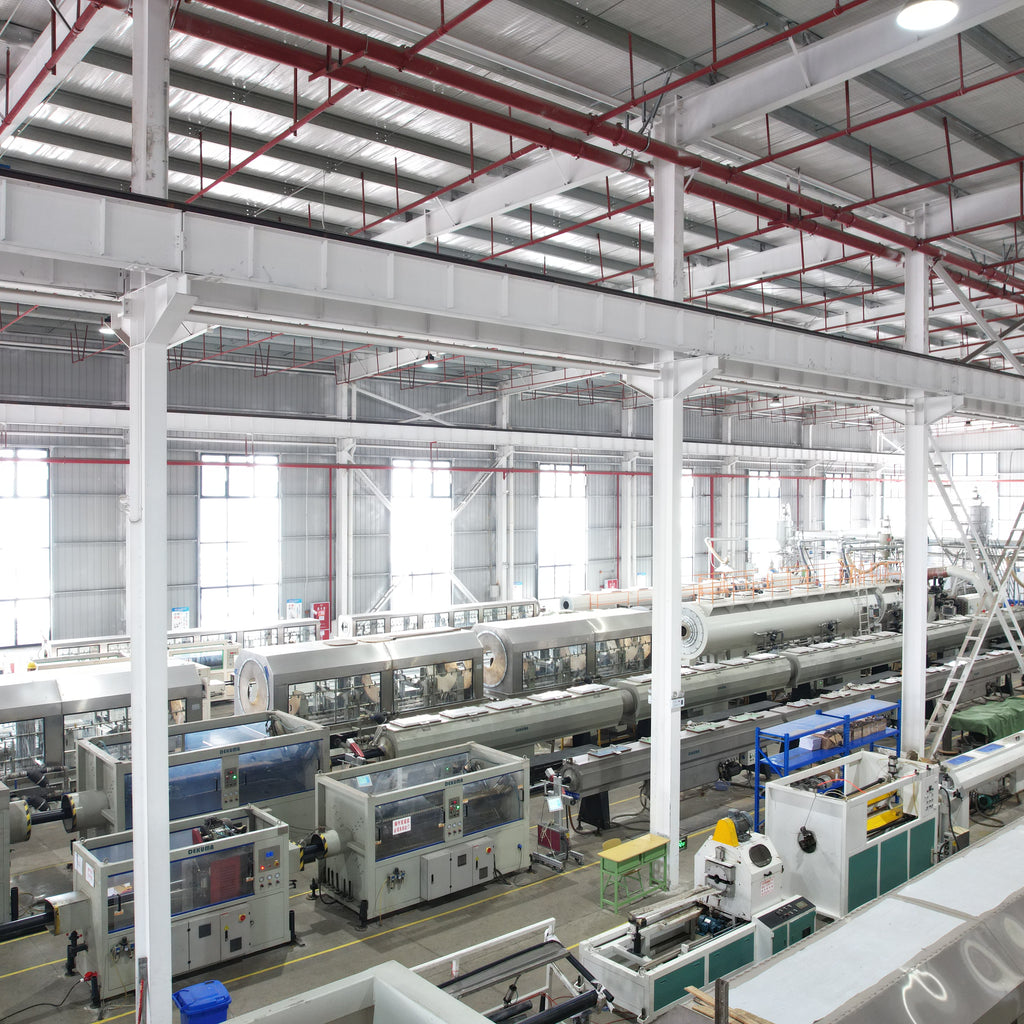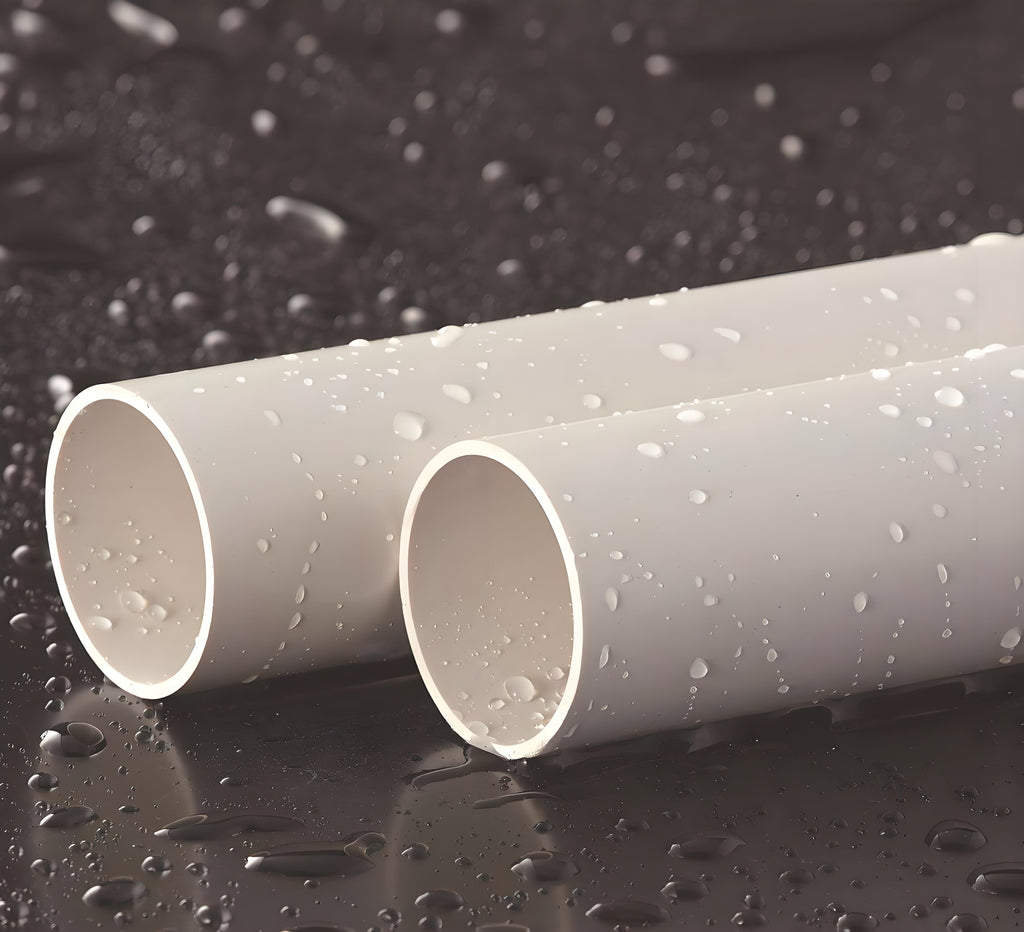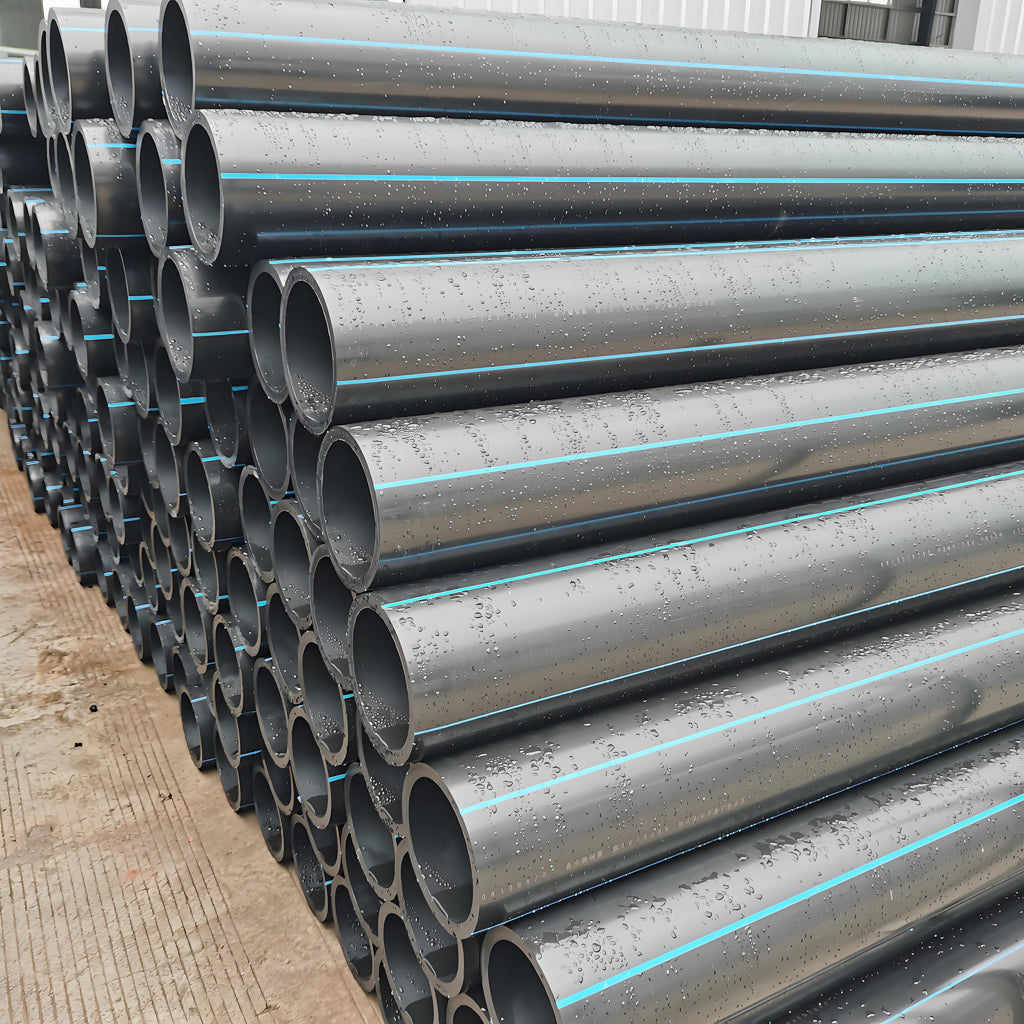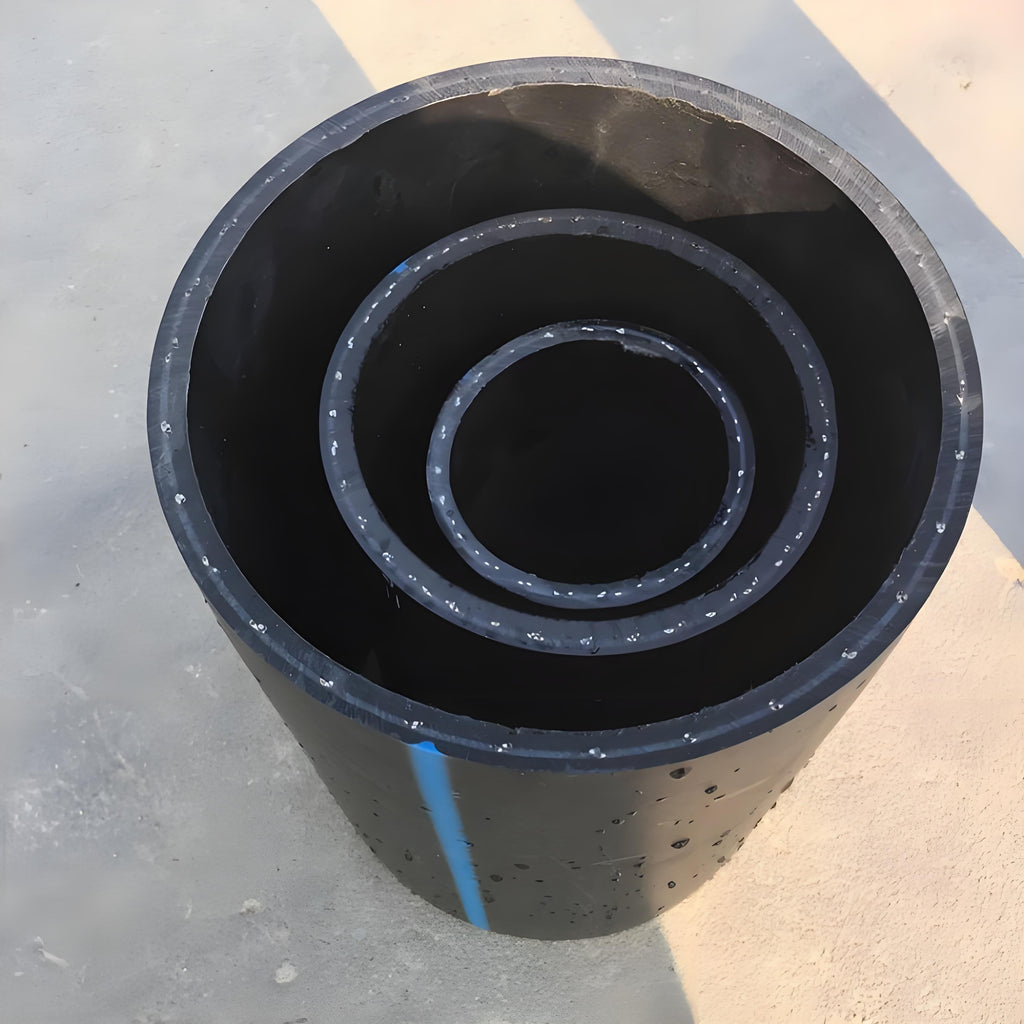-
Gelation Control and Life Cycle Performance Optimization of PVC-U Water Supply Pipes ——Drinking Water Safety Applications Based on GB/T 10002.1 Standard
1. Research Background PVC-U water pipes occupy 28% of global water pipeline markets (2024 QYResearch), offering 50-year design life but facing three challenges: Toxic dichloromethane (DCM) test for gelation degree 35% higher brittleness at < -5℃ Lead migration exceeding EU standards by 16x 2. Core Issue: Gelation-Performance Relationship 2.1 Failure Mechanism DSC and SEM reveal: Tensile strength <45MPa at gelation <85% (GB/T 10002.1-2017) 20% strength decay with secondary crystallinity >15% DCM test only works for gelation <50% 2.2 Key Parameters Parameter GB Requirement Engineering Challenges Gelation degree (%) - Traditional ±12% variation Lead content (mg/kg) ≤10 Some products 85mg/kg Low-temperature impact (kJ/m²) ≥12 Northern regions need ≥20kJ/m² 3.... -
Study on Chemical Corrosion Resistance and Life Cycle Performance Improvement of PE Water Supply Pipes ——Drinking Water Transportation Applications Based on GB/T 13663 Standard
1. Research Background PE water pipes occupy 35% of global drinking water markets (2024 Global Market Insights), but face three challenges from ClO₂ disinfection: Service life <30 years under ClO₂ (vs. 50-year design) 0.1mm/h crack growth rate in PE80 25% strength decay with recycled materials 2. Core Issue: ClO₂-Induced Degradation 2.1 Oxidation Mechanism FTIR and GPC analysis (Figure 1) reveal three-stage degradation: Free radical initiation at tertiary carbons Molecular weight loss 15% per 0.1 carbonyl index increase Elongation at break drops from 600% to 120% after 1000h 2.2 Key Parameters Parameter GB Requirement Corrosion-Induced Decay Elongation at break (%) ≥350 8-12% annual loss SCG resistance (h) ≥100 (PE100) Reduced to 45h OIT... -
Steel-Plastic Interface Enhancement and High-Pressure Transportation Technology of Steel Wire Mesh Reinforced Composite Pipes ——Multi-Scenario Pressure Pipeline Applications Based on CJ/T 189 Standard
1. Research Background Steel wire mesh reinforced composite pipes occupy 28% of pressure pipeline markets (2024 CPPIA), offering SN16 ring stiffness and -40℃~80℃ temperature resistance, but face three challenges: Interfacial peel strength <40N/cm (CJ/T 189-2019 limit) Max pressure 3.5MPa with single-layer winding >3% deflection in large-diameter pipes 2. Core Issue: Interface Failure Mechanism 2.1 Bonding Mechanism XPS and pull-out tests (GB/T 2791-1995) reveal: Mechanical interlock failure (55%): Insufficient roughness (Ra <3.2μm) Chemical failure (30%): Polar mismatch between HDPE and steel Environmental failure (15%): Hydrolysis under water-oxygen exposure 2.2 Key Parameters Parameter GB Requirement Engineering Challenges Galvanized layer thickness (μm) ≥8 Coastal areas need >15μm Interfacial shear strength (MPa) ≥3.0 Traditional 2.2MPa...


